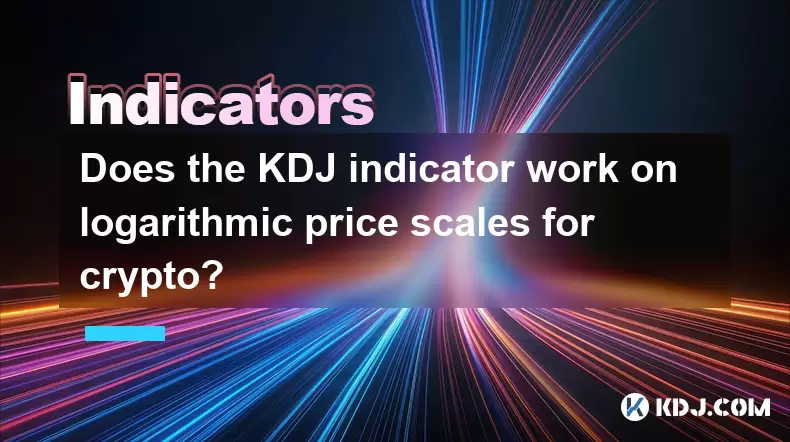-
 Bitcoin
Bitcoin $115100
-1.30% -
 Ethereum
Ethereum $4758
-1.70% -
 XRP
XRP $3.027
-2.19% -
 Tether USDt
Tether USDt $0.9998
-0.01% -
 BNB
BNB $883.2
-1.42% -
 Solana
Solana $204.0
2.62% -
 USDC
USDC $1.000
0.02% -
 Dogecoin
Dogecoin $0.2371
-0.97% -
 TRON
TRON $0.3612
-1.24% -
 Cardano
Cardano $0.9128
-2.19% -
 Chainlink
Chainlink $26.13
-3.93% -
 Hyperliquid
Hyperliquid $44.73
0.90% -
 Sui
Sui $3.715
-0.56% -
 Stellar
Stellar $0.4153
-2.41% -
 Ethena USDe
Ethena USDe $1.000
-0.04% -
 Bitcoin Cash
Bitcoin Cash $588.9
-2.06% -
 Avalanche
Avalanche $25.91
3.27% -
 Hedera
Hedera $0.2525
-1.45% -
 Litecoin
Litecoin $120.9
-1.35% -
 UNUS SED LEO
UNUS SED LEO $9.607
0.30% -
 Toncoin
Toncoin $3.382
-0.31% -
 Shiba Inu
Shiba Inu $0.00001329
-0.38% -
 Uniswap
Uniswap $11.38
-1.67% -
 Polkadot
Polkadot $4.222
2.83% -
 Aave
Aave $354.5
4.93% -
 Dai
Dai $0.0000
0.00% -
 Bitget Token
Bitget Token $4.704
-1.49% -
 Cronos
Cronos $0.1565
1.83% -
 Ethena
Ethena $0.7463
1.55% -
 Monero
Monero $265.8
-0.39%
Does the KDJ indicator work on logarithmic price scales for crypto?
The KDJ indicator's calculations remain unchanged on logarithmic scales, but its visual alignment with price improves, making momentum shifts and divergences clearer in volatile crypto markets.
Aug 13, 2025 at 11:35 am

Understanding the KDJ Indicator in Cryptocurrency Trading
The KDJ indicator is a stochastic oscillator that expands on the traditional Stochastic %K and %D by introducing a third line known as %J. This indicator is widely used in cryptocurrency trading to identify overbought and oversold conditions, potential trend reversals, and momentum shifts. The KDJ consists of three lines:
- %K (Fast Stochastic): Reflects the current closing price relative to the price range over a defined period.
- %D (Slow Stochastic): A moving average of %K, smoothing out fluctuations.
- %J: Calculated as 3 × %K – 2 × %D, making it more sensitive and volatile than the other two lines.
In crypto markets, where volatility is high and price movements can be abrupt, traders rely on the KDJ to time entries and exits. The calculation involves comparing the latest closing price to the high-low range over a specified number of periods, typically 9. The formula for %K is:
%K = [(Current Close – Lowest Low) / (Highest High – Lowest Low)] × 100
This value is then smoothed to derive %D, often using a 3-period simple moving average. The %J line amplifies the divergence between %K and %D, highlighting potential turning points.
Logarithmic vs. Linear Price Scales in Crypto Charts
When analyzing cryptocurrency price charts, traders can choose between linear and logarithmic price scales. A linear scale displays price changes with equal spacing between values—$10 to $20 appears the same distance as $100 to $110, even though the percentage change differs significantly. In contrast, a logarithmic scale represents price changes in percentage terms, meaning that a 10% rise from $10 to $11 occupies the same vertical space as a 10% rise from $100 to $110.
In the context of highly volatile assets like Bitcoin or Ethereum, logarithmic scaling is often preferred because it provides a more accurate visual representation of percentage-based price movements. This is especially important when analyzing long-term trends where prices may increase by several orders of magnitude.
The KDJ indicator operates on price data—specifically, the closing prices and the high-low ranges over a lookback period. Since it is based on absolute price differences, the underlying scale (linear or logarithmic) does not alter the raw data used in its calculation. However, the visual interpretation of the KDJ on a logarithmic chart may differ due to how price action is displayed.
Does the KDJ Indicator Function Differently on Log Scales?
The mathematical computation of the KDJ indicator remains unchanged regardless of the chart’s price scale. Whether the chart uses a linear or logarithmic Y-axis, the input values—closing price, highest high, and lowest low—are identical. The formulas for %K, %D, and %J depend solely on these numerical inputs, not on how the price is visually scaled.
However, visual alignment between the KDJ lines and price movements can appear different. On a logarithmic chart, large percentage moves at higher prices are given proportional visual weight. This can make divergences between price and the KDJ more apparent. For example, if Bitcoin rises 50% from $20,000 to $30,000, the upward momentum may be more clearly reflected in the KDJ’s behavior when viewed on a log scale, as the chart doesn’t compress the percentage gain.
Traders should note that while the indicator values are consistent across scales, pattern recognition and signal timing may feel more intuitive on a logarithmic chart for long-term crypto assets. This is because the log scale reduces the visual distortion caused by exponential growth phases common in crypto markets.
Step-by-Step: Configuring KDJ on a Logarithmic Chart in TradingView
To properly assess the KDJ indicator on a logarithmic price scale, follow these steps in TradingView:
- Open a new chart and select a cryptocurrency pair, such as BTC/USDT.
- Right-click on the price axis (Y-axis) and choose "Log" from the context menu to switch to a logarithmic scale.
- Click on the "Indicators" button at the top of the chart.
- In the search bar, type "KDJ" and select the KDJ (Stochastic) indicator from the list.
- Ensure the default settings are appropriate: 9 periods for %K, 3 for %D, and 3 for slowing (if applicable).
- Confirm that the indicator is applied to the close price and that the high/low values are sourced from the correct timeframe.
- Observe how the KDJ lines behave during sharp rallies or corrections, particularly in relation to overbought (above 80) and oversold (below 20) zones.
It is critical to verify that the data feed is accurate and that no custom modifications have altered the KDJ’s calculation. Some third-party scripts may apply smoothing or normalization that could interfere with standard interpretation.
Practical Implications for Crypto Traders
Using the KDJ on a logarithmic scale does not change the numerical output of the indicator, but it can enhance contextual analysis. During bull runs, where crypto prices often grow exponentially, a log scale prevents early price action from being visually minimized. This allows traders to better assess whether KDJ overbought signals at $50,000 carry the same weight as those at $10,000.
For instance, if the KDJ reaches 85 at $10,000 and again at $50,000, the market context differs drastically. On a linear chart, the second peak might appear more dramatic due to the larger dollar move. On a logarithmic chart, both moves are normalized by percentage, helping traders determine if the momentum intensity is truly increasing or simply reflecting scale distortion.
Another practical benefit is in identifying hidden divergences. A bearish divergence occurs when price makes a higher high but the KDJ makes a lower high. On a log scale, this divergence may be more evident because the percentage-based price progression aligns better with the momentum measured by the KDJ.
Frequently Asked Questions
Does switching to a logarithmic scale affect the KDJ’s overbought/oversold thresholds?
No. The thresholds of 20 and 80 remain valid regardless of the price scale. These levels are based on the indicator’s internal calculation, not the visual representation of price.
Can I use KDJ on intraday crypto charts with log scaling?
Yes. The KDJ functions identically on 5-minute, 1-hour, or daily charts when using logarithmic scaling. The key is ensuring that the price data is correctly interpreted by the platform.
Why does the KDJ look different on my mobile app versus desktop?
This discrepancy may arise if the price scale setting differs between devices. Check that both platforms are set to logarithmic mode and that the same KDJ script version is in use.
Is the %J line more reliable on log-scaled charts?
The %J line’s sensitivity does not improve inherently on log charts, but its signals may align better with percentage-based price movements, making trend reversals easier to spot in long-term crypto trends.
Disclaimer:info@kdj.com
The information provided is not trading advice. kdj.com does not assume any responsibility for any investments made based on the information provided in this article. Cryptocurrencies are highly volatile and it is highly recommended that you invest with caution after thorough research!
If you believe that the content used on this website infringes your copyright, please contact us immediately (info@kdj.com) and we will delete it promptly.
- XYZVerse, Shiba Inu, and the 2025 Bull Cycle: A Meme Coin Evolution
- 2025-08-24 13:05:12
- WLFI Token, BingX, and the Trading Landscape: A New York Perspective
- 2025-08-24 12:45:20
- Aave, Governance, Allocation: Navigating DeFi's Shifting Sands
- 2025-08-24 12:45:20
- Crypto Coins in 2025: Meme Coins, Undervalued Blockchains, and Bull Run Predictions
- 2025-08-24 13:05:12
- Fed Pivot Ignites Crypto Rally: Altcoins Set to Outperform?
- 2025-08-24 13:25:12
- Eric Trump, Tokyo, and Metaplanet: A Bitcoin Bonanza?
- 2025-08-24 11:05:13
Related knowledge

What does it mean when the +DI and -DI cross frequently in the DMI indicator but the ADX is flattening?
Aug 11,2025 at 03:15am
Understanding the DMI Indicator ComponentsThe Directional Movement Index (DMI) is a technical analysis tool composed of three lines: the +DI (Positive...

What does the sudden appearance of a "dark cloud cover" candlestick pattern during an uptrend indicate?
Aug 13,2025 at 11:35am
Understanding the 'Dark Cloud Cover' Candlestick PatternThe dark cloud cover is a bearish reversal pattern in technical analysis that typically appear...

What does it mean when the moving average, MACD, and RSI all send buy signals simultaneously?
Aug 11,2025 at 01:42pm
Understanding the Convergence of Technical IndicatorsWhen the moving average, MACD, and RSI all generate buy signals at the same time, traders interpr...

What does it mean when both the KDJ indicator and the RSI show overbought signals simultaneously?
Aug 13,2025 at 11:35am
Understanding the KDJ Indicator in Cryptocurrency TradingThe KDJ indicator is a momentum oscillator derived from the Stochastic Oscillator, widely use...

What does it mean when the price is trading above the SAR indicator but the red dots are densely packed?
Aug 09,2025 at 11:49pm
Understanding the SAR Indicator and Its Visual SignalsThe SAR (Parabolic Stop and Reverse) indicator is a technical analysis tool used primarily to de...

What does it mean when the candlestick chart forms a "Morning Star" but trading volume is sluggish?
Aug 12,2025 at 06:28pm
Understanding the Morning Star Candlestick PatternThe Morning Star is a three-candle bullish reversal pattern commonly observed in cryptocurrency pric...

What does it mean when the +DI and -DI cross frequently in the DMI indicator but the ADX is flattening?
Aug 11,2025 at 03:15am
Understanding the DMI Indicator ComponentsThe Directional Movement Index (DMI) is a technical analysis tool composed of three lines: the +DI (Positive...

What does the sudden appearance of a "dark cloud cover" candlestick pattern during an uptrend indicate?
Aug 13,2025 at 11:35am
Understanding the 'Dark Cloud Cover' Candlestick PatternThe dark cloud cover is a bearish reversal pattern in technical analysis that typically appear...

What does it mean when the moving average, MACD, and RSI all send buy signals simultaneously?
Aug 11,2025 at 01:42pm
Understanding the Convergence of Technical IndicatorsWhen the moving average, MACD, and RSI all generate buy signals at the same time, traders interpr...

What does it mean when both the KDJ indicator and the RSI show overbought signals simultaneously?
Aug 13,2025 at 11:35am
Understanding the KDJ Indicator in Cryptocurrency TradingThe KDJ indicator is a momentum oscillator derived from the Stochastic Oscillator, widely use...

What does it mean when the price is trading above the SAR indicator but the red dots are densely packed?
Aug 09,2025 at 11:49pm
Understanding the SAR Indicator and Its Visual SignalsThe SAR (Parabolic Stop and Reverse) indicator is a technical analysis tool used primarily to de...

What does it mean when the candlestick chart forms a "Morning Star" but trading volume is sluggish?
Aug 12,2025 at 06:28pm
Understanding the Morning Star Candlestick PatternThe Morning Star is a three-candle bullish reversal pattern commonly observed in cryptocurrency pric...
See all articles

























































































